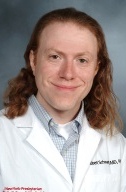

Stewart MD, Lopez S, Nagandla H, Soibam B, Benham A, Nguyen J, Valenzuela N, Wu HJ, Burns AR, Rasmussen TL, Tucker HO, Schwartz RJ.PKG-1α mediates GATA4 transcriptional activity. 2015 Genome-wide identification of MESP1 targets demonstrates primary regulation over mesendoderm gene activity. Soibam B, Benham,A., Kim, J., Weng, K.C., Yang, L., Xu, X., Robertson, M., Azares, A., Cooney4 A.J., Schwartz, R.J., and Liu, Y.2012 Transcription factors ETS2 and MESP1 transdifferentiate human dermal fibroblasts into cardiac progenitors. Islas JF, Liu Y, Weng KC, Robertson MJ, Zhang S, Prejusa A, Harger J, Tikhomirova D, Chopra M, Iyer D, Mercola M, Oshima RG, Willerson JT, Potaman VN, Schwartz RJ.in Biology from the University of Pennsylvania.Ĭonversion of Human Adipogenic Stem Cells into Cardiac Myocytes Ultimately, to reconstitute a human heart, the vision is to grow these engineered cells on artificial biomatrices and to treat diseased human hearts. These efforts will help to identify other optimal cell types such as human adipogenic stem cells for such therapy and are designed to overcome technical and ethical issues involved in using embryonic stem cells. Generating cardiac progenitors from fibroblasts is one of the most important milestones in contemporary biology. ETS2 and Mesp1 sit at the pinnacle of the cardiopoiesis regulatory hierarchy.

#DR. ROBERT SCHWARTZ SKIN#
Co-expression of both Ets2 and Mesp1, successfully reprogrammed human skin fibroblasts into cardiac progenitors, as shown by the de novo appearance of core cardiac transcription factors, gap junction proteins, sarcomeric proteins, electrical activity, and contractility. Schwartz’ research team explored the role of mammalian ETS1/2 and Mesp homologues of cardiogenic transcription factors of Ciona intestinalis, to convert primary human dermal fibroblasts into cardiac progenitors.

Recently, Schwartz turned his attention to directed trans-differentiation of somatic cells to cells of other lineages, offering a new avenue for stem cell replacement therapy. Several years ago, Schwartz then identified SRF as the only transcription factor required for sarcomere formation. Robert Schwartz is a pioneer in defining the regulatory paradigm in which non-muscle contractile proteins are switched off during muscle differentiation and replaced by muscle specific contractile protein isoforms.


 0 kommentar(er)
0 kommentar(er)
